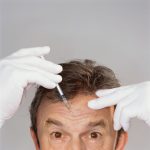 Botox is arguably most well-known today for its cosmetic capabilities and it is currently the most common non-surgical cosmetic procedure in the United States. Although almost everyone’s heard of Botox, few people realize that it was first used in the medical community for therapeutic purposes as opposed to cosmetic purposes.
Botox is arguably most well-known today for its cosmetic capabilities and it is currently the most common non-surgical cosmetic procedure in the United States. Although almost everyone’s heard of Botox, few people realize that it was first used in the medical community for therapeutic purposes as opposed to cosmetic purposes.
Doctor’s continue to use Botox today for the treatment of a variety of medical conditions, and it was recently approved for the treatment of bladder control problems.
Botox and Bladder Control…and The Painful Symptoms
Advertisement
The bladder is located right below your abdomen and it is responsible for the storage of urine. Many people don’t give their bladder’s much thought, but when bladder problems such as bladder control issues develop, the embarrassing and sometimes painful symptoms can make it nearly impossible to think of anything else.
Urinary incontinence is a common problem that is characterizes by a loss of bladder control. It develops when the bladder muscles become either too weak (stress incontinence) or too active (overactive bladder), and both prostate problems and nerve damage can increase the risk for the development of urinary incontinence.
Treatment Methods for Bladder Problems
The symptoms of urinary incontinence can range widely from the occasional mild episode of leakage, to uncontrollable wetting. Treatment methods for a loss of bladder control vary depending on the cause and severity of the problem but some of the most common include bladder exercises, medications, the insertion of medical devises, and the use of behavioral techniques. In severe cases, surgery is sometimes used to help people with urinary incontinence, but surgery is invasive and expensive, and it is best used as a last resort. Luckily, there is a new alternative for the treatment of urinary incontinence that doesn’t respond to other therapies, and if the title didn’t give it away – it’s the very same thing that you use to smooth your wrinkles.
The Procedure for Overactive Bladder
On January 18th, 2013, the Food and Drug Administration (FDA) approved the use of Botox to treat the loss of bladder control that is caused by an overactive bladder. This procedure involves injecting small doses of Botox into the bladder muscles with the use of a small instrument that is inserted through the urethra. Once the Botox is injected it blocks the release of the chemicals that cause muscle spasms and causes temporary muscle paralysis.
In so doing, the injection of Botox into the bladder causes the bladder to relax and increases the amount of urine that the bladder can store. The procedure usually only takes about 20 minutes and most patients can go home the same day that they receive it. The Botox injections are done with the use of anesthesia (a numbing agent), so the procedure is usually not painful. Patients start to notice an improvement in symptoms approximately 7 days after the procedure and the results last anywhere from nine months to one year.
According to two clinical studies, conducted on over 1,000 participants, Botox injections can significantly reduce urine leaking, frequent urination and a sudden, urgent need to urinate. In fact, approximately four out of ten women became completely continent just 6 weeks after treatment. “Today’s approval provides an important additional treatment option for patients with overactive bladder, a condition that affects an estimated 33 million men and women in the United States,” states Hylton V. Joffe, M.D., director of the Division of Reproductive and Urologic Products the in FDA’s Center for Drug Evaluation and Research. So if you are at your wits ends with your lack of bladder control, and you have tried everything else, take head because this simple procedure may be just the answer you are looking for.
